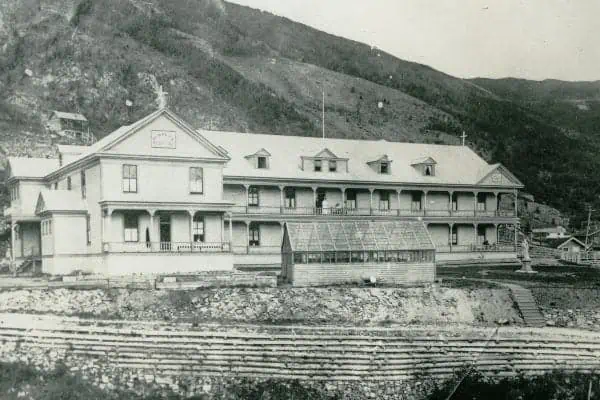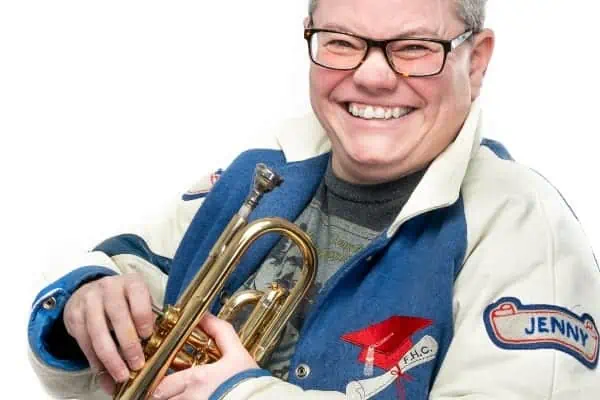A chance discovery at a gold-rush-era squatters’ site offers a shimmering glimpse into what life was like on the outskirts of Dawson, more than a century ago
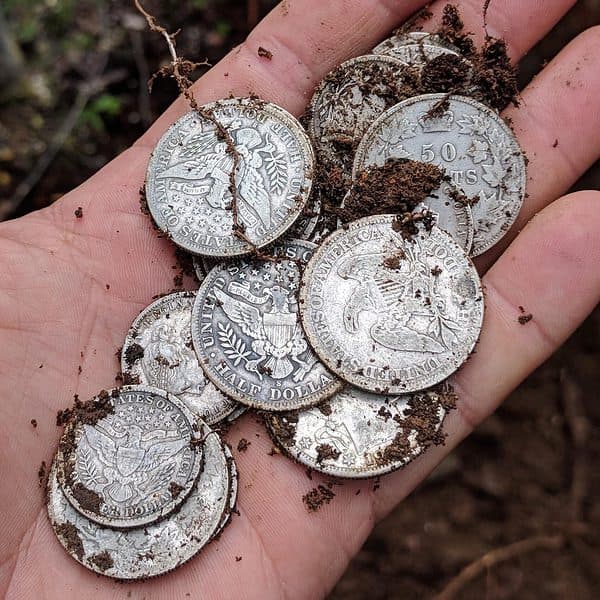
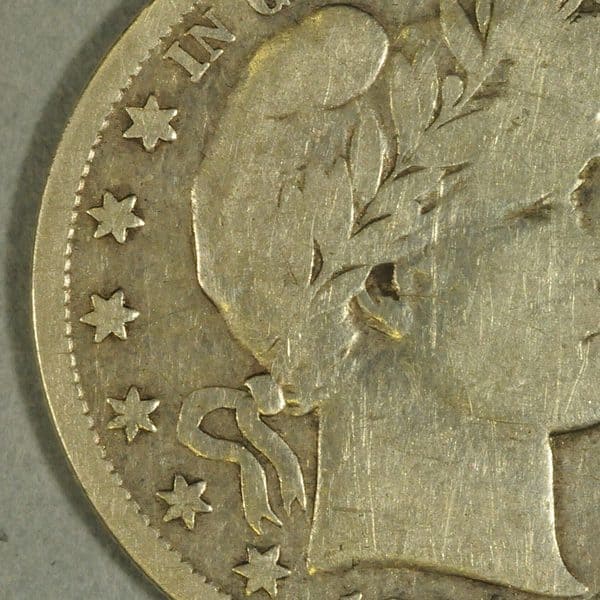
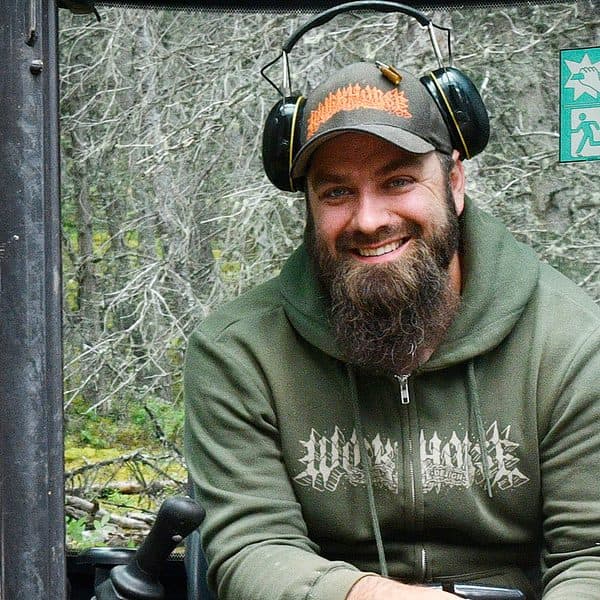
As a professional trail builder, Bill McLane spends a lot of time digging earth, moving rocks and finding treasure. Usually, that “treasure” consists of broken saws, railway spikes and old bottles.
“I love history and learning about history, so it’s all interesting to me,” he said. “But I’ve never found anything like this before.”
In the summer of 2018, McLane spent six weeks in Dawson. He was working on a crew hired to build a new trail across the side of the Dome. Now overgrown with plants and trees, it was a spot many people called home during the Klondike Gold Rush and up until the 1910s.
“We were in an area of the forest where you could see the old dirt streets and tent sites with stoves,” said McLane. “We had permission to use one of the old streets as part of the trail, which was really cool.”
Historical photos from the early 1900s show hundreds of tents and cabins on the hillsides around Dawson. As the boom town expanded and the population grew, the price of real estate increased. Gold-rush stampeders couldn’t afford to live in the town, so they built up.
“On the hills above the city, to the east, lived a variety of curious men in tiny, immaculate log cabins with thick sod roofs,” according to author Laura Berton, who came to the Yukon in 1907.
On walks through the area, Berton mentioned hearing the “sounds of gramophones filtering through the woods.”
More than 110 years later, McLane was listening to heavy metal music in the small excavator as he worked on the new trail.
“I was just digging away in a bit of a daze, honestly, because I’d been doing it for six weeks or so at that time,” said McLane. “I’d get pretty zoned out.”
He scooped up some dirt, and when he unloaded the bucket, a pile of sparkling coins came flying out. No box, no wrapping—just shiny silver coins mixed in with the dirt, roots and leaves.
“It didn’t seem real,” said McLane. “You’re not used to seeing that kind of thing come out of the bucket.”
It took him a moment to register what was happening.
It also took him a moment to decide what to do next. No one else had seen the coins. He was alone in the forest with a pile of actual treasure.
After a beat, McLane decided to tell his project leader, Derek Crowe.
“I walked into Derek’s camper and I said, ‘Hey, I found something.’ He didn’t even look up from his cereal,” said McLane. “So, I put this sock full of coins down on the table … and then his eyes turned into saucers.”
In all, McLane unearthed 23 coins: Canadian and American quarters and half dollars dating between 1864 and 1902.
At face value, they’re worth about $10. That’s roughly $400 in today’s dollars, but they would be worth even more in a collector’s market.
“I think the story is more valuable to me than having a bunch of coins that I can never show anybody,” said McLane. “I’m a blabbermouth, so I wouldn’t have been able to keep it a secret very long anyway.”
Crowe called in the find and they arranged a hand-off with Tr’ondëk Hwëchin Chief Roberta Joseph and Wayne Potoroka, former Mayor of Dawson. After that, the cache ended up with the Yukon government for analysis and safekeeping.
“The Dawson area is continuously surprising us,” said Yukon government archaeologist Ty Heffner. “You can’t really do anything that scratches the ground without something interesting popping up.”
Heffner is one of the experts who gets a call when something unexpected—like a stone tool, an abandoned safe or a coin cache—is found in the Yukon.
“There are always these chance discoveries where people are going about their daily lives and they run into things,” he said. “It’s a great opportunity to raise awareness because it’s in those moments that people really get excited and they see the real value in heritage.”
Recently, the Yukon government launched a campaign called Yukon’s Living Heritage, to guide people who find something that looks like it has heritage value in the Yukon. It asks people to leave the object in place and report the find.
But in this case, that wasn’t possible.
“In this case, leaving a pile of coins exposed in the woods doesn’t make a lot of sense,” said Heffner. “The trail-building crew reported the find and the coins will remain a public heritage resource.”
For Heffner, the coins are an intriguing link to our collective past.
“I think the really interesting part is all the unanswered questions,” he said. “Like, who put them there? Why did they put them there? And why didn’t they come back for them?”
From the dates on the coins, it’s certain that they were buried during or after 1902. The rest of the story is a best guess.
It can be assumed that they belonged to one of the hillside residents who was likely a less-affluent miner or labourer who came to the Yukon and planned to stay for a short time. Perhaps they belonged to one of Laura Berton’s “curious men.”
“If it was somebody working in the goldfields and only coming into town at odd hours, they might not necessarily be able to access a bank reliably,” said Heffner. “I’m sure there were lots of accidents out in the goldfields, too, so maybe something happened to this person.”
Since finding the coins, four years ago, McLane has had a lot of time to speculate on the fate of their original owner.
“I think somebody made enough money to buy their ticket home and they buried it behind the tent so they wouldn’t spend it,” said McLane. “That’s what I would do. I’d make sure that I had enough to get home and then mess around and gamble or whatever.
“But something must have happened for them to not come back for the money.”
In honour of the mysterious cache of coins, part of the new trail is now called Buried Treasure.
In summer 2022, McLane was back in the Yukon, again, working on a project with Crowe and the Singletrack to Success crew in Carcross.
“Finding those coins was a total once-in-a-lifetime thing,” he said. “If something like that ever happens again, it’ll just be absurd … people won’t believe me.
“Derek [Crowe] was even joking about it. He said, ‘I don’t know how you’re going to top those coins, but I can’t wait to see.’”
For McLane, the best way to top the coins would be by finding “a giant gold nugget.”



